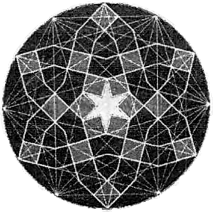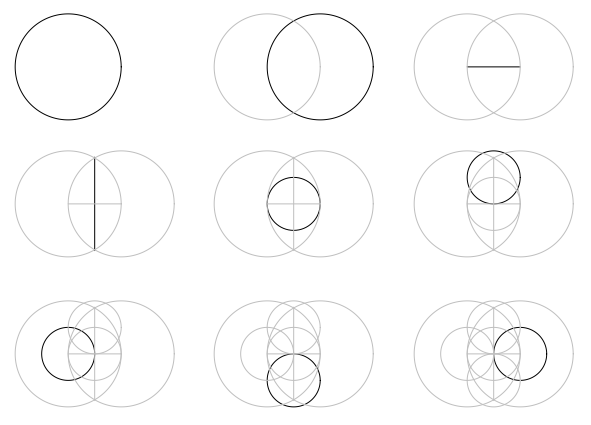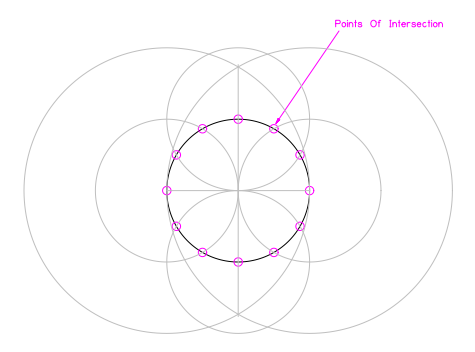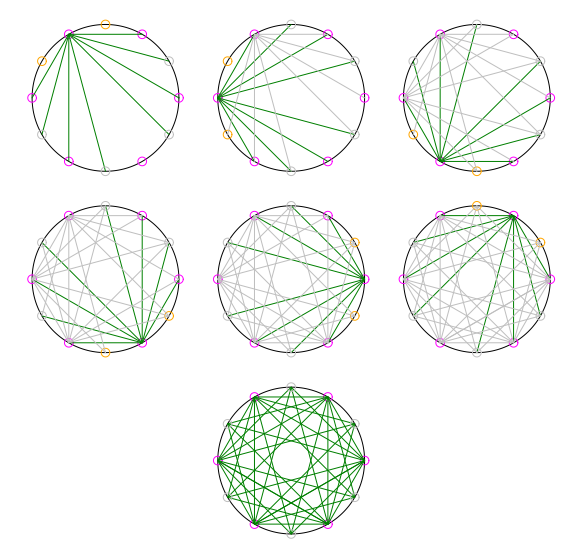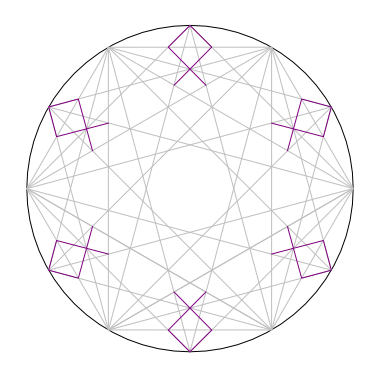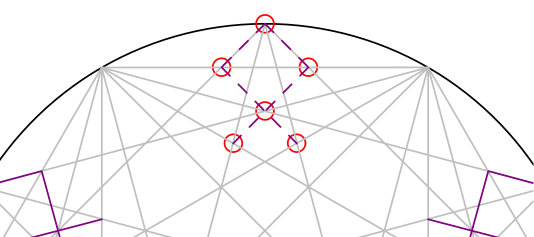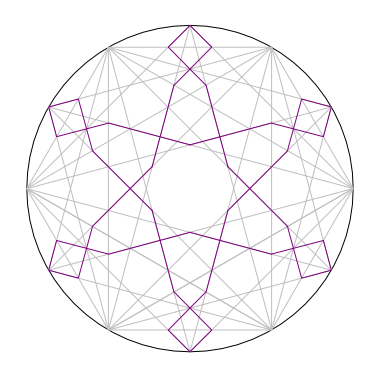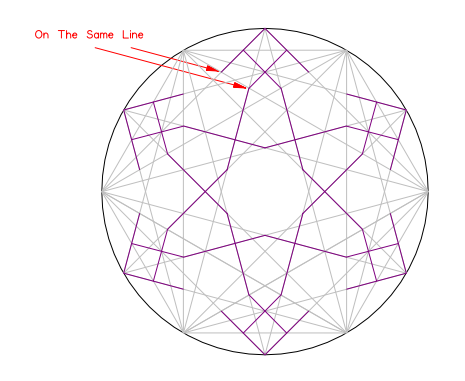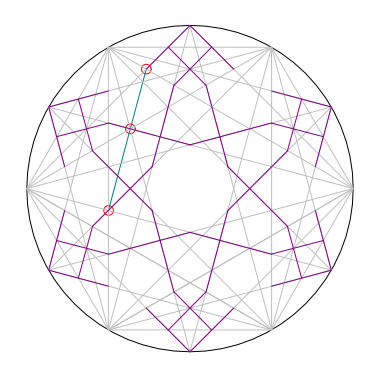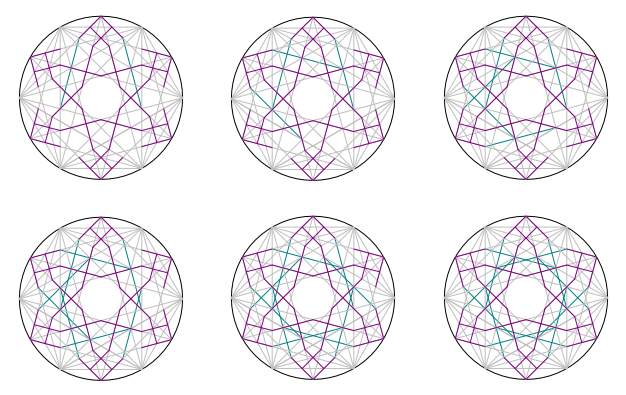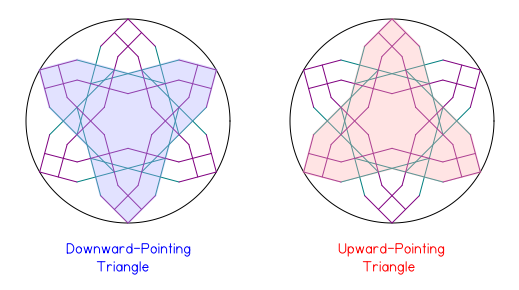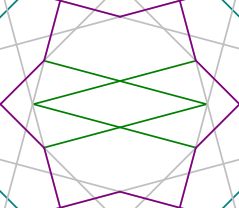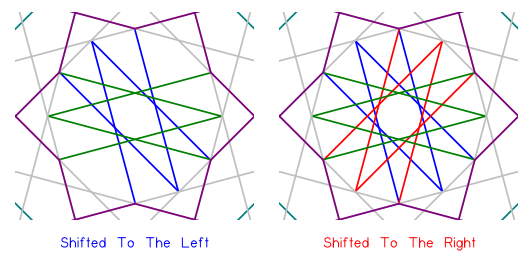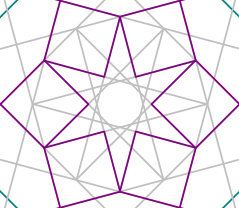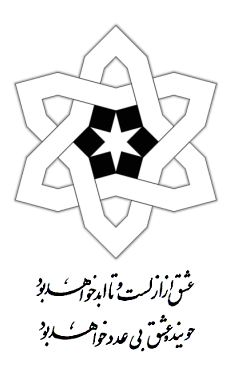Back • Return Home
♥ The True Lover's Knot ♥
Image from pg. 186 of A Beginner's Guide To Constructing The Universe by Michael S. Schneider
Introduction
This geometric pattern is sometimes referred to as "The True Lover's Knot". Here we will show how to create it using only a compass and straightedge. This is a good project for those interested in the design of Islamic tilings.
While it has been attempted to make the process as simple as possible, please have patience when going through the procedure. Try to make its drawing into a form of meditation. Please treat the resulting image with respect (as it is a sacred symbol, reflective of the archetypes that give rise to all manifest things), and also the paper that it is drawn upon (as the tree from which it came is a manifestation of The ONE).
We sincerely hope that you will enjoy its aesthetic beauty, and find it enlightening to contemplate its structure!
Part I: The "Bent" Hexagram Shape
[Note: These instructions are adapated from the ones given within this wonderful video. Thanks Tyfort!]
Step 1: Divide the circumference of a circle into twelve equal parts by whichever means you feel most comfortable with. Here is a very simple way...
We will remove the extra construction lines to make all of the following steps more clear.
Step 2:
From six of the points we will draw eight chords in such a way that each of them is connected to all of the other points except for those directly adjacent or opposite to them. Skip over any duplicates as necessary.
Here we have started on the upper-left point and moved counter-clockwise, but you should end up with a figure like this last image. It does not matter which of the points that you start from. Just be sure to keep track of which ones you have already done.
Step 3: On each of the six points that we did not use in the previous step, we will make six squares by using where the lines intersect to form new lines.
Notice that two of the edges of each square are extended outward to make an "L"-like shape.
This is a zoom of the top-most square showing the six points needed to make it.
Step 4: Using the "L"-like shapes and several of the pre-existing construction lines, we can form a sort of hexagram whose vertices are composed of the squares we just made.
Step 5: To give it width, we must first extend the other two edges of the square outward, until they meet the same line that the "bends" in the hexagram are on.
Be careful not to extend the edges too far.
Step 6: Then, by using several points of intersection as guides, we can form other line segments that are parallel to the edges of the hexagram shape made in Step 4.
The three red circles highlight the main points used to form the line.
Continue to make line segments in this manner until the entire hexagram is given thickness...
We now have enough construction lines to form the full hexagram. While this collection of lines may seem a little busy, hopefully it is easy to see the main pattern contained within it.
Part II: The Inner Star
[Note: These instructions are adapted from those given on pgs. 50-51 of the book Islamic Geometric Patterns by Eric Broug.]
Let's take a moment to form the smaller star-like pattern on the inside of the hexagram as well...
Step 7: Looking at the central space, we see that the construction lines naturally divide it into twelve parts. Use these points to make two horizontal, interlocking "V"-like shapes.
This is a zoom of the inner portion of the hexagram.
Step 8: Make two more sets of interlocking "V"-like shapes, one shifted to the left, and another shifted to the right.
Step 9: Using the 12-pointed star just formed, take only that portion necessary to make the smaller
hexagram.
It looks as if it is made up of six squares.
Step 10: All that is left now is to remove any extra construction lines...
[Note: The Persian calligraphy and its translation are from this website. It is a quote by the poet Mawlānā Jalāl ad-Dīn Muḥammad Balkhī, more commonly known as Rūmī.]
Translation
Love is from the infinite and will remain until eternity.
The seeker of love escapes the chains of birth and death.
Philosophical Interpretation
"True Love", is a principle, more than only a Blissful feeling. It is synonymous with Life, Coherence, Virtue. Virtue is Constructiveness, that which is completely beneficial towards all simultaneously, including oneself. If you truly Love another, in this trancendent sense, then you sincerely and honestly care about their safety, health, and well-being, in addition to your own. You continually recognize that you are both One on the deepest of levels, and therefore do everything you constructively can to enrich their lives as you express your fullest potential. It is a fundamental tenent of most spiritual teachings that holding a sense of empathy that embraces the constructiveness inherent in All things simultaneously (none excluded) will induce a sense of Oneness, a literal experiential knowing of our Unity. Rather than it becoming something that you are told of, or a piece of information that you theorize about, it becomes something that you can verify for yourself through a direct awareness.
Your will (i.e.: your ability to choose) has the power to influence the reality that exists around you because you are an extension of The ONE, the source from which it All arises and the power by which it is All sustained. In this way, our responsibility to Nature, to each other, is vast, for we are literally co-creating the reality that we each experience. Each of us is a vital component in the unfolding of this reality, and Love is the means by which we are inextricably bound together. Thus, "True Love" is the foundation of our very existence. It trancends every human characteristic (e.g.: culture, race, gender, status, look, etc.).
In essence, this means that our purpose is to derive endless Bliss from impeccably and continually acting in Virtue. A welcome side effect of this behavior is immortality (in both the spiritual and biological senses of the word). If you forever give Life, how can you do anything but Live eternally?
